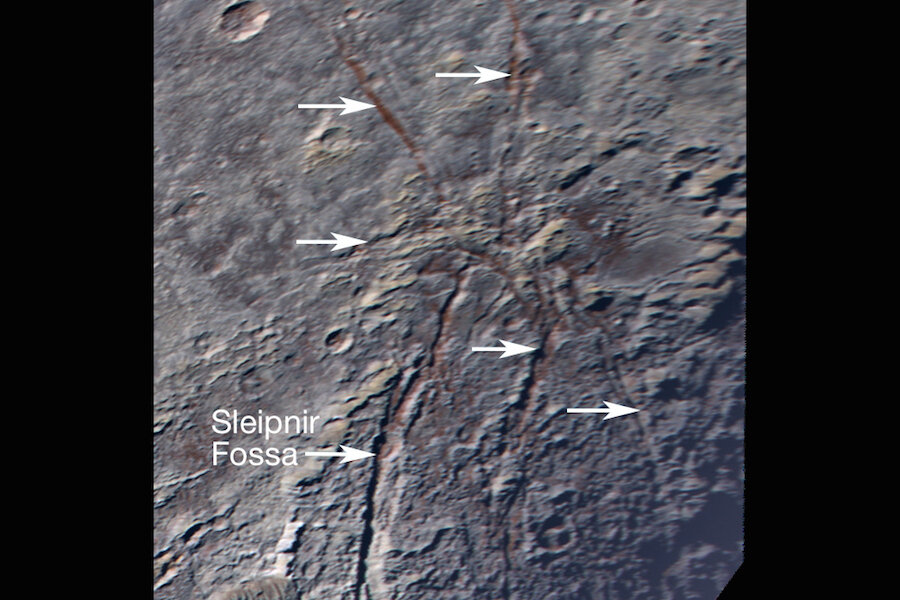Giant spider: Another mysterious geographic feature on Pluto
Loading...
From ninth planet to astronomical oddball, scientists’ evolving understanding of Pluto is revealing more and more strange finds about the distant dwarf planet. The latest: an icy "spider" formation stretching across the landscape.
New NASA images have revealed red tendrils radiating from a central point in the form of a spider. Images of the odd formation were captured by NASA’s New Horizons spacecraft in July.
Questions abound over the details of the spider formation, but there are few reference points for scientists to pull from.
"Oh, what a tangled web Pluto's geology weaves," said Oliver White, part of the New Horizons geology team, said in a NASA press release. "The pattern these fractures form is like nothing else we've seen in the outer solar system, and shows once again that anywhere we look on Pluto, we see something different."
The New Horizon spacecraft, launched in 2006, was the first mission tasked with visiting Pluto and the Kuiper Belt. Scientists have released a steady string of discoveries about the dwarf planet ever since the spacecraft completed a flyby of Pluto in 2015.
Images have revealed mountains powdered with methane snow, areas where liquid nitrogen once pooled into lakes, and recent evidence of erosion. But little has prepared scientists for the spider-shaped anomaly.
The feature consists of several fractures in the surface – current images show at least six. Length varies between the fractures. The longest, informally called Sleipnir Fossa, is more than 360 miles long, while the shortest runs for roughly 60 miles.
Terrain also does not appear to have an impact on the fractures.
“To the north and west, the fractures extend across the mottled, rolling plains of the high northern latitudes, and to the south, they intercept and cut through the bladed terrain informally named Tartarus Dorsa,” NASA states.
Scientists have encountered fractures on Pluto before. Some run along the crust parallel to each other in strips due to Pluto’s icy crust expanding. The fact the spider fractures radiate from a central point suggests a different cause, possible “material welling up from under the surface,” according to NASA.
The red coloring revealed by the fractures? That’s still an anomaly.
NASA has ranked the exploration of the Kuiper Belt and Pluto as the highest priority for exploring the solar system. The New Horizons mission was originally scheduled to end in 2016, but the spacecraft has already traveled past Pluto and deeper into the largely unexplored Kuiper Belt.
If further funding is found and NASA approves an extended mission, the New Horizons spacecraft would travel farther into space and explore other large space objects orbiting the sun in the Kuiper Belt region in 2017, according to the New Horizons team.








